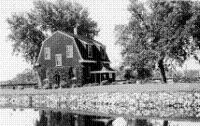De Pere Lock and Dam Historic District
Located at the Fox River at the end of James Street, De Pere. The historic district includes the Locktender's House on Government island.
De Pere Lock and Dam History
The first dam in De Pere was built by the Fox River Hydraulic Company in 1837 and included a small 100-foot long by 20-foot wide lock. Little else is known about this lock and dam. In August of 1846, the United States made its first attempt to improve the Fox River via an Act of Congress granting land to the State of Wisconsin to provide a canal between the Fox and Wisconsin Rivers. Around 1849 or 1850, a second canal was started, just north of the 1835 canal, and in 1850, a 140-foot long by 35-foot wide lock was built at the present lock location. However, the canal was abandoned again due to problems between the state and the contractor.
A July 1853 charter by the Wisconsin legislature created the Fox and Wisconsin River Improvement Company to complete the canal. Efforts to improve river navigation were made including dredging, construction of locks to carry vessels through the rapids, and construction of dams to maintain adequate water levels. Within three years time, a navigable canal was completed so that the small steamer, the Aquila, voyaged from Pittsburgh via the Ohio River to the Mississippi River and then through the Wisconsin and Fox rivers to Green Bay. In August 1866, the Fox and Wisconsin River Improvement Company was sold to the Green Bay & Mississippi Canal Company, and the De Pere lock was lengthened to 165-feet in 1869.
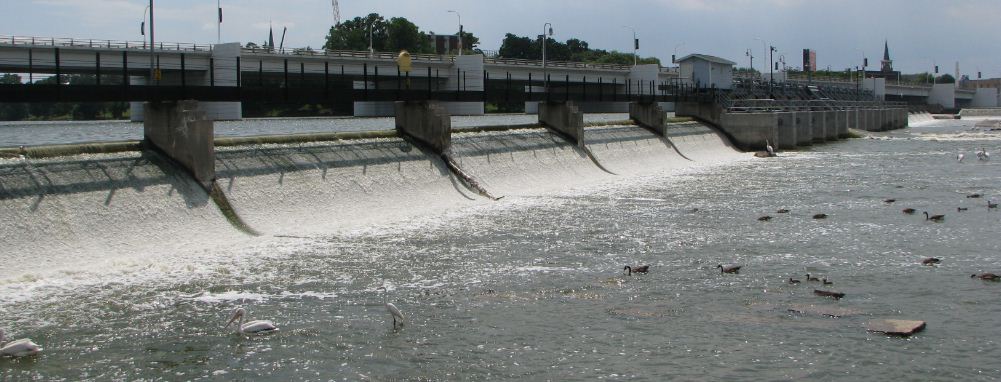
Inland water transportation soon faced stiff competition from the railroads which had extended through the Fox River Valley to Green Bay by 1862. While some freight and passenger service was diverted, river traffic along the Lower Fox River persisted as a result of the area's expanding grain, woolen mills, and wood-related industrial bases.
Through an initial Act of Congress in July of 1870 and a final Act of Congress in September of 1872, the United States government bought out the Green Bay & Mississippi Canal Company and took control of the improvements along the Fox River. However, water rights remained with the State of Wisconsin. The River & Harbor Act of March 1873 outlined the United State's first improvement plan for the Fox River which authorized repair and replacement of existing improvements along the Fox and appropriated funds for the construction of additional locks and dams to further improve its navigational system; this work was completed in June 1876. A one and one-half story front gabled house was built in 1879 on the east side of the canal to house the government's local lockmaster.
As river navigation was improved, river traffic grew. The steamboat became a prominent means of freight and passenger transportation on Wisconsin waterways, particularly in areas where timber was available to build them.
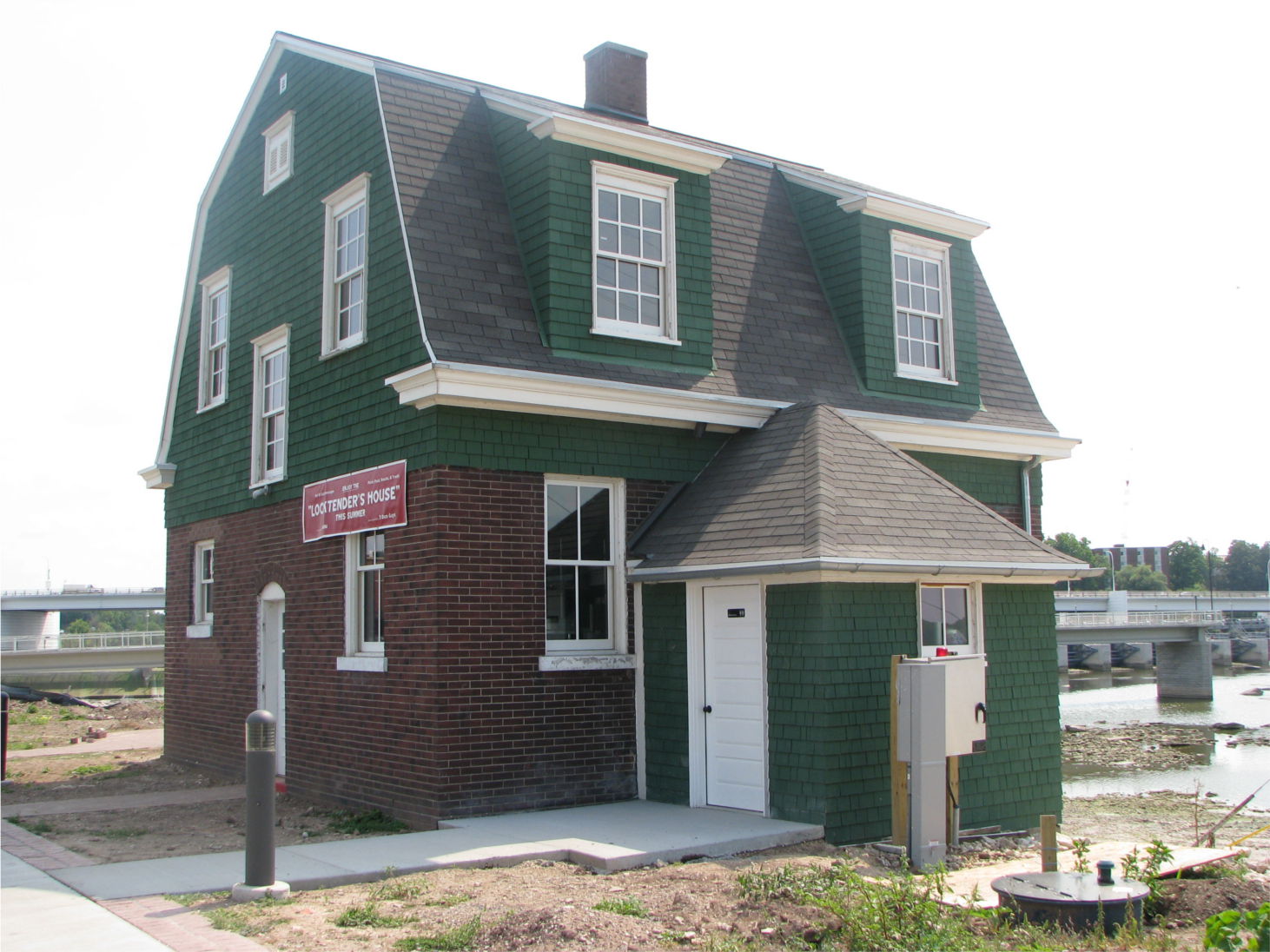
Excursion steamboat trips became popular on many of Wisconsin's inland lakes and rivers during the 1870s and 1880s. A completely new lock, 170-feet long by 35-feet wide, was built in De Pere in 1896. A new two-story Dutch Colonial Revival style house was built on the dyke between the canal and the river in 1912; the former lockmaster's house was converted into the extant lockshack and housed the administrative functions of the lockmaster.
Economic activity along the Fox and Wisconsin rivers steadily declined after World War I as commerce turned to other transportation means such as railroads, automobiles, trucks, and planes. Bustling lake and river ports, particularly in the Fox River Valley, declined in importance. Despite this, the existing dam was rebuilt between 1929 and 1930, and the lock was rebuilt shortly thereafter. The upper half of the extant lock was rebuilt from 1934-1935, and the lower half was rebuilt from 1935-1936, creating the 36-foot wide by 146-foot long chamber which exists today. This work included cutting away of the bedrock floor to lower it, pouring concrete chamber walls, and widening the backing of the chamber walls with rock taken from the chamber floor.
In these days, commercial boating traffic along the Lower Fox River, which connected the Bay of Green Bay to Lake Winnebago, was still a vital link for industries in all the communities in between. While the locks at De Pere and Neenah were the most used facilities along the Lower Fox River, commercial traffic, mostly boats containing coal to power upstream industries, began to decrease in the 1950s, causing the federal government to close the Upper Fox River to navigation in 1951. As a first step in their move to eventually abandon the Lower Fox River system, the Corps of Engineers began making changes to operate more efficiently and save money. In 1955, a system of roving locktenders, headquartered in Kaukauna, was implemented to service the locks between Menasha and De Pere when the resident lockmasters were off duty. The coal boats stopped running between 1959 and 1962, and the system's primary use was for recreational purposes.
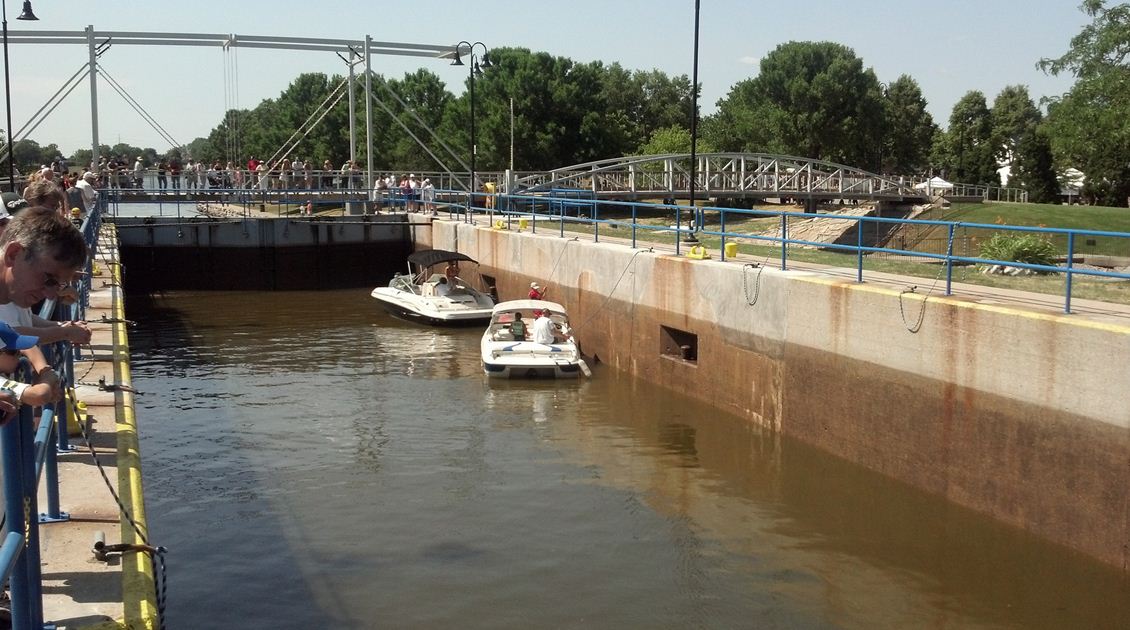
However, the Lower Fox River's system of lockkeeper's houses, including the De Pere Lockkeeper's House, was abandoned by the Corps of Engineers in October 1983. Gradually, the remains of Wisconsin's inland water transportation history fell into disrepair. In an effort to document the site and promote its future preservation, the De Pere Lock and Dam Historic District was listed in the National Register of Historic Places in 1993, along with seven other lock and dam sites along the Lower Fox River, for their significance as a complete and operable example of a river/canal, slack water transportation system dating from the mid-nineteenth century. While initially operated as part of a much larger Fox-Wisconsin Waterway, the Lower Fox River portion is the only remaining system in the State. Not only is this system significant for its role in the State's transportation and engineering history, but also in its evolution in nineteenth century constitutional and political history.
Architectural Significance
The De Pere Lockkeeper's House, a contributing resource within the District, is an example of the Dutch Colonial Revival style, which is less formal than its Colonial and Georgian Revival predecessors. Examples of the style are most easily identified by a gambrel roof, occasionally ending with flared eaves. Clapboard, shingles, brick, and stone materials are commonly used in combination on the exteriors to give a picturesque quality. On larger homes, the symmetry of the style is often offset by a small wing on either or both sides of the gabled ends. The style was especially popular for small-scale residences in early twentieth century suburbs.
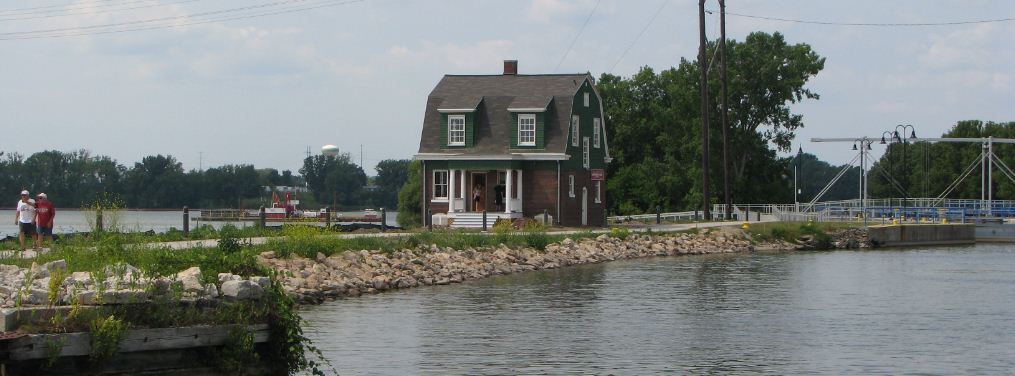
The De Pere Lockkeeper's House features the character-defining gambrel roof with flared eaves. Exterior materials are used in combination, including cream 48 colored stone at the foundation and basement; red brick at the first floor; and green painted wood shingles at the front and back porches, second floor gambrel ends, and dormers.
Period of significance is the length of time a property is associated with the important historic activities which qualify it for National Register listing. As the house is an integral component of the overall site, the period of significance for the De Pere Lockkeeper's House begins with its construction in 1912 and ends in 1936 when the lock was rebuilt for the last time, signifying the last major improvement to the site by the U.S. Army Corps of Engineers.
*Information found in the "Historical Structures Report" provided by the Fox River Navigation System Authority*
